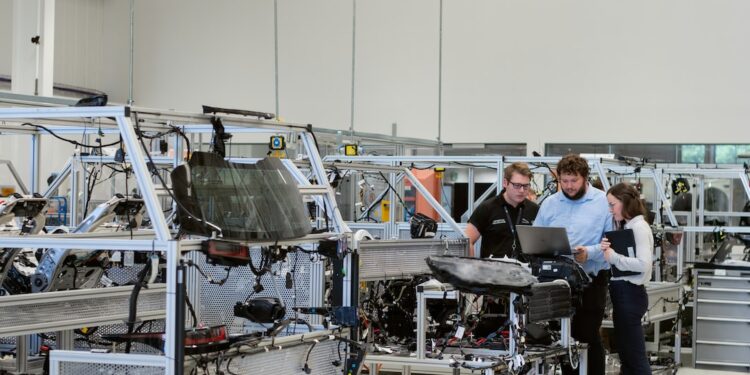The Future of Robotics in Engineering and Automation
Automation and robotics have undoubtedly revolutionized the engineering industry, and their impact on various sectors is only expected to grow in the future. As technology continues to advance, the possibilities for the use of robots in engineering and automation are limitless. This blog post will explore the exciting developments in this field and discuss the potential future of robotics in engineering and automation.
One area where robotics has already made significant strides is in manufacturing. Robots have proven to be highly efficient at performing repetitive tasks with precision, leading to increased productivity and cost-effectiveness. With the advent of collaborative robots, or cobots, human-robot collaboration is becoming increasingly common in this field. These cobots are designed to work alongside human workers and can perform tasks that pose a higher risk or require more strength. This collaborative approach not only enhances productivity but also promotes worker safety.
The future of robotics in engineering and automation sees these machines evolving into more autonomous and intelligent systems. Artificial Intelligence (AI) is playing a crucial role in this development. Robots equipped with AI algorithms can analyze vast amounts of data and make complex decisions in real-time. This ability to learn and adapt makes them capable of handling more sophisticated tasks and challenges.
One area that benefits greatly from this level of intelligence is the field of autonomous vehicles. Driverless cars have become a reality, and companies like Tesla, Google, and Uber are investing heavily in this technology. Such vehicles rely on a combination of sensors, AI, and robotics to navigate through traffic and get passengers to their destinations safely. The potential impact of autonomous vehicles goes beyond transportation – it can fundamentally change the way cities are planned and revolutionize public transportation systems.
Another emerging technology in the field of robotics is the use of drones. Drones are being utilized in various sectors such as agriculture, construction, and even package delivery. In engineering, drones have proved to be extremely valuable for surveying and inspecting large infrastructure projects. They can capture high-resolution images, collect data, and even perform maintenance tasks in hard-to-reach places. As their capabilities and flight times increase, the potential applications for drones in engineering and automation will expand even further.
Robotics is also making a significant impact in the healthcare industry. Surgical robots are already assisting doctors in performing complex surgeries with increased precision. In the future, we can expect to see more advanced robots taking over routine medical tasks, such as collecting patient data or administering medications. These robots can operate non-invasively, reducing the risk of infections and errors in healthcare settings.
The integration of robotics in the energy sector is another exciting development. In renewable energy, robots can be used to inspect and maintain solar panels and wind turbines, ensuring maximum efficiency and longevity. These machines can work autonomously, reducing the need for human intervention and improving overall energy output. Additionally, robots can be deployed in hazardous environments, such as nuclear power plants, to carry out inspections and maintenance tasks without exposing humans to potential risks.
While the future of robotics in engineering and automation is promising, there are also concerns about the impact on the workforce. As robots become more capable, there is a fear that they could replace human jobs. However, many experts argue that automation will primarily complement human work and create new job opportunities. Instead of eliminating jobs, robots can take over mundane and dangerous tasks, allowing humans to focus on more creative and complex aspects of their work.
In conclusion, the future of robotics in engineering and automation is bright. Robots are becoming increasingly intelligent, autonomous, and versatile. They have the potential to transform various sectors, from manufacturing to healthcare, energy, and transportation. Although there are concerns about the displacement of human workers, the integration of robots is likely to enhance productivity, improve safety, and create new job opportunities. The possibilities are endless, and it is an exciting time to witness the ongoing advancements in robotics.















